#storytelling tips
Text
A Step-by-Step Marketing Guide so we can spite traditional publishers (and make people cry).
~ This is a guide specific for fiction/writeblr. All of this is for free and there is little social media posting/ads involved (unless you want to venture into that). ~
Within the writeblr spheres, there's this underlying hope that our stories will find their audience. Perhaps we'll have a fandom full of fanart and video essays, or maybe we'll be an instant classic and sit on collectors' beloved bookshelves. Our stories could sit within the deepest corners of someone's heart and maybe they never tell a soul about what's so special to them. Maybe our stories become those 'underrated masterpieces'.
Or we just want to see people ugly cry over our writing.

Whatever your hope may be, marketing is an important path to venture on (especially because traditional publishers are rejecting diverse books in favor of ones that are already famous + the whole sub-par machine thing they seem obsessed with.)
And thus, my childhood marketing obsession will hopefully be of use to you. This is all for free (unless you want to spend money) and you don't need to figure out social media platforms (unless you want to, and this guide works if you decide to take that route too.)
Step One: Characters
Marketing spheres will define these fictious people as 'avatars' or 'the target audience'. You could also call them characters. Because that's what they are: fictional people.
For this step, you shall create characters that would love your story.
And here's some great news: You've already done this.
Perhaps you wrote your story to comfort a prior version of yourself. Perhaps each character in your story holds an aspect of your personality. Perhaps you were ridiculously self-indulgent and made the story you would've loved to read. These are all possible characters you can reuse for marketing.
Write down 2-4 quick archetypes for these characters. You'll chose an aspect of your story (characters, themes, or the younger-self that you wrote it for) and write a thumbnail sketch. (Main issue, fears, wants, personality traits if they relate to the main issue.)
I'll do it for my story (the Land of the Fallen Fairies) down below:
Anuli-like (my MC): Overthinking and aloof. Wants a happy ending but thinks their current personality/character isn't good enough for one. The present stales in comparison to the past/the childhood they lost. The 'gifted theater kids'.
Kamari-like (side character): Postpones happiness in favor of creating a perfect schedule/getting accomplishments. Heavy masking. Creative but doesn't create anymore. Promises themself they'll enjoy themselves later, when they've earned it. Workaholics.
My younger self: Wanting a fantasy escapism to embody the traits they wish they had in real life. Dissatisfied and worried about reality. Perfectionists.
Self-indulgent: People who love plants and forests and fantasy worlds far away from reality/humanity.
Great! Now it's time to find these characters.

Step Two: Setting.
(Let's assume you're using the internet for your marketing. But a similar method works for real life too.)
Where do the characters live?
In order to figure that out, we need to discover the characters' interests, what they watch to solve their problems, and who they find #relatable.
(You can do this for each character or for all the characters at once.)
For example:
Anuli-like -
interests: Stories. Analysis videos. Fantasy escapism. Things that remind them of their childhood. (so nature, warmth, comfort, play, imagination and the times they would actually enjoy learning.)
Places to look: Nature quotes, ambience videos, children's shows and fairytales (comfort shows). Fandom culture - fanfic video essays, fan art.
Solving problems (the problem being wanting a 'happy ending' but feeling that their personality/lifestyle/characteristics aren't right for one): Mindfulness things. Self-healing. Quotes and meditations and candles galore. Slow living. Nature vlogs. Self care. All that 'live in the moment' culture.
Places to look: Slow living. Nature vlogs. The 'softer self-help' (spirituality stuff. Magic/ overnight answers). Witchcraft. 'aesthetic nature' places. Guided meditations.
#relatable: Burnt out gifted kids. People who think so much that their life passes them by. Storytellers and creative who create to make sense of the world. People who like dark, gory things in spite of who they want to be. People who don't like reality.
Places to look: Those 'learn better and remember everything' places. (The 'burnt-out gifted kid' recovery places.) Stop overthinking spots. Those quotes on Pinterest from poetic people who think too much /aff. Storyteller places. Dark academia. Classical music. One off quotes/ poetry.
Okie dokie. Once you have this, find channels, social media accounts, blogs, songs, books, etc. that fit with the categories you wrote down. (They should appeal to the characters) You can search up some of the terms you listed into searches and see who pops up. Bonus points if you find people that overlap with multiple sections.
I know I didn't include booktube or booktok in here. You can if you want too. But those can be a bit... 'consume these 500 books'. You also want to find other places where people who would like you story live, even if they don't follow booktube or booktok.
Congrats! Now you know where your characters live!
Step Three: the scary part

Take everyone you found on your search for the settings and write them down a list. Make sure you get an email/contact info. (they usually list them somewhere under 'for business inquires') Also feel free to watch their content and get to know what attributes these settings have.
And now... we talk to them. about our stories. You can do it. I believe in you.
This called 'pitching your product' in marketing spheres. But you can be informal about it.
I know it can be difficult to talk about your work, so here's a tone to have:
'I made this thing I like and I think you'll like it too'.
What you'll do is send an email (or dm) that goes like this (inspired by Creative Hive on youtube):
Hi [name],
[Genuine compliment]
[Quick sentence or two about your story. Include the themes and who it appeals to. If you have a logline/sentence summary, include that. But I find that the underlying themes and 'who's it's for' is more engaging.
For my story, I might say something like.
I've written a story you might enjoy, since you like [interest]. It's called the Land of the Fallen Fairies. It's a nature-themed commentary on the pursuit of happiness and fixing yourself to deserve that happiness, told by an overthinking, unreliable, houseplant narrator. It was supposed to comfort me when I got frustrated with myself and my happiness chasing, and I hope it can comfort others too.
(That's probably a bit long and I can trim it down a bit.)
You can phrase it like a gift if you want too.]
[Call to action.
'If you like it, I'd appreciate a mention on your [platform].
I know this part may be difficult to mention (imposter syndrome is not fun.) But I promise that if they do like it, they'll be happy to mention it.]
If they don't respond within... four-ish days? (A week at most). then you can include a follow up. For this you can include a template with info about your story. This way it's easy for them to talk about your story.
The template:
title
genre
blurb
Author
where to find the book
Bonus points if you have an additional, physical thing to send them.
Congrats! Now do this pitching process a few times until you've covered most of your bases. (Pitch to as many people as you can. It will get more comfortable as you do it. Play your favorite song and don't let yourself think too hard about it.)
----------
The benefits of this process are that you find people that are already interested in the themes and vibes of your story (in comparison to to ads, which get shoved in everyone's faces.). Someone your audience already trusts will talk about it, which means you don't need to do all this trial and error to find your audience and make content for them.
It's basically a bunch of people talking about something they like!
AND you diversify your audience across niches, but with an underlying theme/interests. Booktok/booktube must appeal to everyone, so it's a hit or miss for recommendations. (Unless there is someone that specifically does one genre/type of story.)
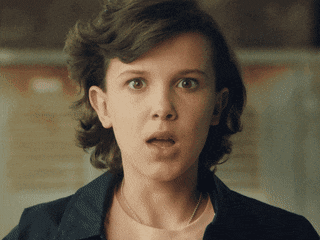
From here you can do fun little things to build up hype and make the book launch feel like this fun event. (I love it when that happens so here's my thoughts about trying to create an event with your story... although that may require another post entirely.)
preorder goals
charity goals
Arg's and puzzles
fund with side plushies and trinkets
Book blog tour
book boxes
as many memes as you can make
rewards (like bookmarks or posters or smth) that people can get for supporting
Talk about the process of creating your story. I know this one channel called 'Dead Sound' that creates 'making of' videos for his short films and they are some of the best videos on youtube.
Okay dear storyteller! Now go forth and share your story with the world!
Additional resources:
Creative Hive <-- a youtube channel that goes through the pitching process.
This video is also very good <-- Haven't watched the rest of the channel but I assume it's also good.
One of the best marketing channels on the internet (the videos are actually entertianing to watch.
Seth Goldin <-- I read his book and took the parts I liked and modified for storytelling marketing.
Dead Sound <-- propaganda to watch the short film series he has (he did the whole 2-d 3-d style wayyyy before spiderverse did... and he's one person making these. One person. It's amazing.
Glitch <--- If someone can figure out how The Amazing Digital Circus was marketed then I will pay you money. It seems to be a lot of memes and funny things.
#writers of tumblr#writerscommunity#writing advice#writing tips#writer stuff#on writing#writeblr#writing community#writer#storytelling tips#fiction#writing#filmmaking#creative writing#writers on tumblr#writers and poets#marketing strategy#pitching#writing resources#resources#useful#for reference#useful stuff#the writeblr library#please do well post#I've spent so much time on this
375 notes
·
View notes
Text
Accidental Transformations in Fiction: Pros and Cons to Consider
If you're considering including a supernatural transformation in your story, it can happen in several ways. One way is for your character to accidentally transform. Here are some positives and negatives to think about before you decide:
Positives:
Adds unpredictability: Accidental transformation can add an element of surprise to your fiction. Readers may be more likely to wonder what happens next.
Creates chaos: A sudden transformation would likely throw your character's life into disarray, which can make things interesting. They might need to learn their new powers and adjust to life with new rules, disadvantages, or advantages. As a writer, you can explore how this upends your hero's life.
Feels natural: Sometimes accidental transformations feel natural and less contrived way of gaining supernatural abilities. It might make things a little more believable.
Negatives:
Can feel contrived: In the same breath, accidental transformations can also give a coincidental tone. It can feel like an easy way out for the writer when giving characters supernatural powers. You might leave readers wondering if you're trying to move the story too quickly.
Lack of agency: The character didn't choose this. They have no control over it. Sometimes giving your character a choice to get themselves into trouble is a great way to create conflict. They got themselves into this mess now they need to get out. Accidental transformations can make it seem more like a character is a pawn in the story instead of a participant.
Limits exploration: Random transformations limit the ability to explore themes like fate and destiny.
Accidental supernatural transformations can be a great way to add unpredictability to a story. It can make it seem like a character is falling into a magical world, and the reader could too. Consider if it is a natural fit for your story and allows you to expand and express your story's plot. Happy writing!
#writing#writing tips#writing advice#fiction writing#fantasy writing#supernatural#transformation#plot devices#storytelling#storytelling tips#narrative structure#character development
63 notes
·
View notes
Text

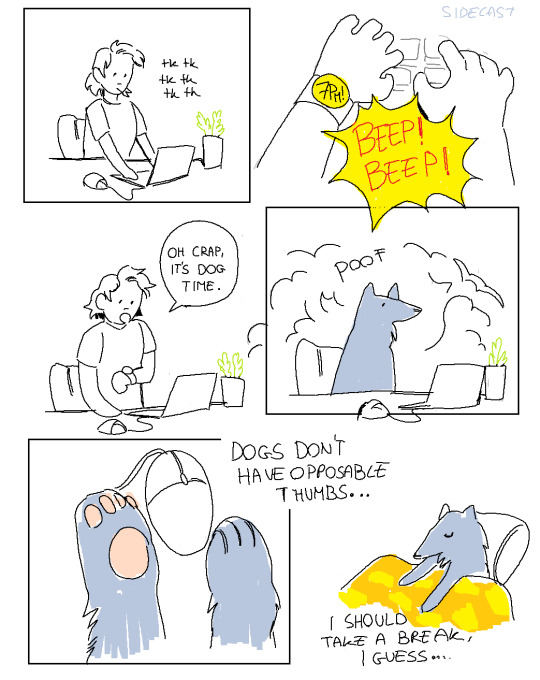
dog time AKA the only reason i've been managing not to overwork myself
#comic#ms paint#ms paint comic#work tips#dog#furry#fursona#dogy#dog time#storytelling#doodles#ms paint doodles#nicolart
149K notes
·
View notes
Text
Creating Tension and Suspense in Your Writing: Keeping Readers Hooked
Tension and suspense are crucial elements in storytelling that captivate readers, keep them engaged, and make them eagerly turn the pages. Whether you’re writing a thriller, mystery, or even a romance, effectively building tension and suspense can elevate your narrative and leave a lasting impact on your readers. In this article, we will explore techniques to help you create tension and suspense…

View On WordPress
#atmospheric settings#building suspense#character goals and conflicts#character motivations#cliffhangers#creating engaging narratives#foreshadowing#narrative techniques#pacing in writing#reader engagement#revealing information in writing#storytelling tips#tension in storytelling#unreliable narrators#writing techniques
1 note
·
View note
Text
Go-To Guide to Craft the Perfect Children’s Book

There's a universal charm in how children’s stories captivate the heart, no matter the reader's age. From the infectious giggle of a toddler to the knowing chuckle of an adult, the world of children’s literature offers countless emotions and memories. In the bustling world of storytelling, how does one stand out, especially when the goal is to delight the young and young-at-heart? Dive into our guide on creating that unforgettable children's book. And who knows? Maybe your book will be loved by so many children!
The Little Big Thinkers
Children are a unique audience. They're curious, open-minded, and see the world through fresh eyes. But they also have a limited vocabulary and a different perspective on life. Therefore, understanding the age group you're writing for is vital. Picture books often cater to ages 3-7, early readers might target ages 5-9, and middle-grade books can appeal to kids aged 8-12. Each group has its interests, comprehension level, and maturity, so choose your words, themes, and character developments accordingly.
Remember, even if you’re targeting the youngest readers, simplicity doesn’t equate to dullness. Envision your story as an entry in a big book of children's stories – it should be engaging, memorable, and tailored to their developmental stage.
Choosing Your Central Theme
Every remarkable book has a central theme, a message or lesson it aims to convey. Think of the classics. Many times, they tackle subjects like friendship, bravery, love, or self-acceptance. Your story doesn’t have to address a profound existential concept. But it should have a clear idea or moral that resonates with its readers, both children and adults.
Moreover, considering the vast ocean of themes in every big book of children's stories, your approach should be fresh. Maybe it’s a unique perspective or an unconventional setting; find that differentiating factor.
Develop Memorable Characters: Heroes, Villains, and Sidekicks
What's a story without its cast? Characters are the heart and soul of any narrative. Kids need to relate to, learn from, or even sometimes caution against them. Think of unforgettable characters from your childhood. What made them memorable?
Designing your characters involves more than just giving them a name or a cute appearance. Dive deep into their personalities, quirks, desires, fears, and dreams. And always remember, imperfection often breeds relatability. While children might aspire to be like the heroes in every big book of children's stories, they often find comfort in characters that show vulnerability and growth.
World-Building for the Little Minds
While certain words are off the table, crafting an engaging setting for your story remains paramount. The background serves as the canvas upon which your narrative paints its tale. Whether it's a bustling city, a serene village, or an entirely different planet, your setting should be immersive.
However, balance is key. Overwhelming details can confuse young readers, so keep descriptions vivid but concise. Use strong, sensory words that make the world jump off the pages. Each big book of children's stories succeeds because it teleports its readers into its world, making them a part of the narrative.
Crafting the Plot
Your plot should be like a roller coaster - full of ups, downs, twists, and turns that keep the young reader engaged. But remember, for children, a straight slide can be just as exciting as a loop-de-loop. The key lies in clarity and progression.
Always begin with a solid structure in mind: the introduction, the rising action, the climax, and the resolution. Each event should lead seamlessly into the next. This fluidity ensures that even when featured in a big book of children's stories, your tale will stand out for its coherence and charm.
Illustrations
Imagine a children’s story without illustrations. It's like a song without a melody. The right images breathe life into your narrative. They accentuate the mood, showcase the setting, and bring characters to life.
If you’re not an illustrator, collaborate with one who understands your vision. Discuss key scenes, character appearances, and color palettes. After all, every big book of children's stories is as much a visual treat as it is a literary one.
Conclusion
Writing a children's book is an intricate dance of creativity, understanding, and simplicity. It requires the heart of a child and the discipline of an adult. As you embark on this endeavor, remember that each page you craft has the potential to shape young minds, impart values, and kindle imagination. For more details visit us at https://www.bbbg.org/.
In a world overflowing with stories, your narrative, with its unique voice and heart, has every potential to be featured in the next big book of children's stories. So, embrace the process, enjoy the journey, and create stories that generations will cherish. Happy writing!
Read More:
English Language Learners and the Search for Knowledge
Reading Aloud to Create a Language Rich Environment
Teacher questioning and the emergent bilingual response connection
#big book of children's stories#Books#Children stories#Author Tips#Childrens Literature#Storytelling Tips
0 notes
Text
i'm actually very okay with "there was no other way this could end" endings. if they gotta die, let them die. if they gotta break up or go the wrong way or lose something important, let'em. so long as it completes the story. only thing i dislike more than a forced happy ending is a forced bad ending
#writing#storytelling#film#dnly rants#og#goncharov#gonchposting#writing tips#vaguing marvel on main#history
7K notes
·
View notes
Text
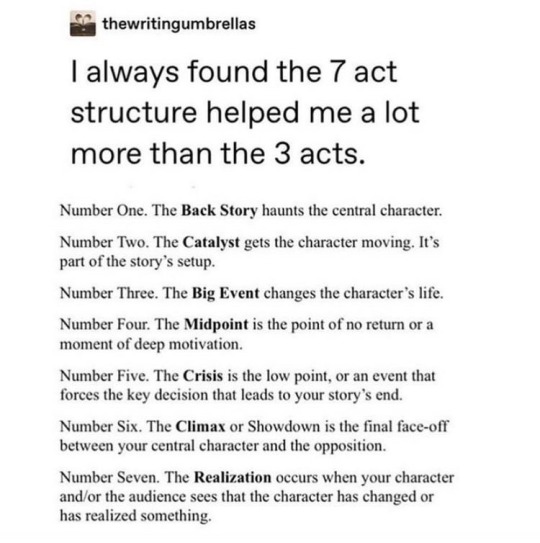
the elusive 7 act Structure
#writing tips#novel writing#writerscommunity#writersociety#writing advice#writer problems#writer things#writers block#writers of tumblr#storytelling#storytellers#writers#storyteller#writing#writerideas#writersoftwitter#stories#storyideas#writersoftumblr#writingideas#writingtips#writinghelp#badwriter
55K notes
·
View notes
Text
So I’ve been thinking about rational vs. irrational character decisions.
An irrational decision is great when your story is driven by your character’s personal flaws and struggles, and for crafting situations where your audience knows that these decisions are unavoidable because they are perfectly in character. Having your characters be perfectly able to solve their problems if they weren’t, y’know, themselves, is so very hard-hitting, and can be a fantastic part of a narrative.
The downfall with irrational decisions is that it can make situations seem less dire or make your antagonists seem less dangerous. If your characters are falling over themselves and their own personal issues, then it’s hard to show how the external problems in your story pose a serious threat, because you can’t demonstrate how they’re hard to deal with if your characters aren’t making solidly competent attempts in the first place.
Rational decisions are great for stories where most of your problems are external, like your characters trying to build a spaceship or infiltrate the bad guy’s lair. It’s also key to any horror writing, where you need your characters to be competent in order for your danger to be credible; if your audience spends the entire time wondering why your protagonists aren’t doing very obvious things to solve their problems, it’ll be a lot harder to get a properly spooky atmosphere going. But if your characters are only ever making the most optimal, logical choices without ever struggling, they won’t be very compelling, so just like with irrational decision-making, there’s a time and a place for this.
Ideally, you want some combination of both rational and irrational character choices. And maybe even more importantly, whatever choice a character’s making needs to be one that makes sense for them given everything you’ve already shown in the narrative so far. If the decision feels forced or contrived, then it doesn’t matter if it’s rational or not, because it’s not a choice that fits with the rest of the story.
But, yeah, ultimately, both types of character decisions are useful tools, and it’s less about one or the other being right, and more about both of these tools being useful for different types of situations.
#ink posts#character writing#writeblr#creative writing#writing#writing inked#writing tips#writing advice#storytelling#writerscommunity#writers on tumblr
826 notes
·
View notes
Text
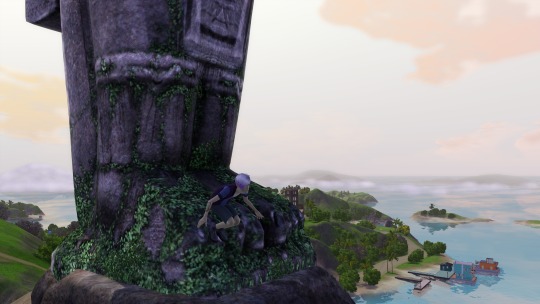



Speaking of posing sims in unroutable areas: here's my photoshoot of a sim diving of Tikki Point in Isla Paradiso.
Posing setup under the cut.

I placed a lot in a routable area and created a platform on which to put the animation player, for convenience. The sim was placed on an OMSP which I moved outside the lot using the Decorator.
Afterwards, I leveled the terrain and hid the platform in Live Mode with the "Go Down Floor" controls.
1 note
·
View note
Text
Storytelling Techniques
A good storytelling method is essential for writing good fiction. There are many storytelling techniques that can be used to create engaging and memorable stories. Here are some common techniques you can use in your stories:
Use sensory details: Including sensory details in your story can help your audience imagine the scene and get emotionally invested in the story. For example, you can describe the colors, sounds, and smells of a place or event.
Build tension and suspense: Tension and suspense are important for keeping your audience engaged and invested in your story. You can create tension by introducing a conflict or challenge that the characters must overcome.
Foreshadowing: Foreshadowing is a technique used to hint at future events in the story. This can create anticipation and keep your audience engaged.
Use pacing effectively: Pacing refers to the speed at which the story unfolds. Make sure to vary the pacing to keep your audience engaged. For example, you can slow down the pacing during emotional or reflective moments, and speed it up during action scenes.
Show, don't tell: Instead of simply telling your audience what is happening in the story, show them through vivid descriptions and actions. This can help your audience feel more immersed in the story.
Use metaphor and simile: Metaphors and similes can help create vivid descriptions and comparisons in your story. They can also help to convey complex ideas in a more accessible way.
Flashbacks and flash-forwards: Flashbacks and flash-forwards can help provide context for the story and create tension. Make sure to use them sparingly and at appropriate moments in the story.
Use humor: Humor can be a powerful tool for engaging your audience and making your story more memorable. Just make sure that the humor is appropriate for the tone and subject matter of your story.
Suspenseful chapter endings: Ending chapters on a suspenseful note can help keep your audience engaged and eager to read on.
By using these techniques and others, you can create a compelling and memorable story that will engage and entertain your audience.
If you want to read more posts about writing, please click here and give me a follow!

#creative writing#writing#writeblr#writerscommunity#writer things#writers#writersociety#on writing#writers on tumblr#women writers#writerscorner#female writers#writerblr#writblr#writing tips#writing community#write#storytelling#technical writing
2K notes
·
View notes
Text
To write an engaging story, actions must have consequences.
Failure in a story should be more than an inconvenience. It should have real effects for the characters and their world.
Be brave, and don’t be afraid to treat your characters harshly.
#tips for writers#writing tips#writing advice#quick writing tips#writers#creative writing#writing#writing community#writers of tumblr#creative writers#writing inspiration#writeblr#writerblr#helping writers#let's write#writers on tumblr#resources for writers#writing resources#writer#writers and poets#on writing#writer stuff#help for writers#writing pep talk#writblr#writers corner#storytelling#writers stuff
339 notes
·
View notes
Text
A Step-by-Step Guide to the Weirdest Mush of Storytelling Techniques Known to Human Beings (that works surprisingly well)
SPOILERS - basically you combine anime/manga storytelling with tumblr character obsessions.

Okie dokie human beings, let me just come out of the gate and say that I've been hyperfixated and doing obsessive researching on storytelling methods since I was ten. You hear it all when you deep dive into this:
'You need conflict to drive your story' (wrong... well, not always true. Conflict isn't required but you can use it for funsies)
'Your characters need to be flawed. Give them flaws so they aren't Mary Sues' (Wrong. Traits in and of themselves have both nice and not-so-nice aspects, depending on the situation.
Take 'loyalty' for example. Loyal people can be apologists for those they are loyal to/not be objective when they think about their friends. But they will also be there for their friends... does that mean they are a people pleaser and won't be as nice to themselves? Mary Sues are only there because they are cardboard cutouts and people aren't having fun with them. *See remakes and pointless cash grabs* When you're self-indulgent and ignore the 'don't make the characters too cool' rules, people can tell. You all will have the time of your lives.)
Then you have... the discourse. As a storyteller, reading those made me so insecure about writing characters because I was worried I would anger someone. This method won't assure avoiding all discourse, but it makes the characters more believable and fun to watch. Everyone else can avoid the story. (It isn't for them anyways)

Anywhosies, after years of researching, I've finally, finally found a storytelling methodology that is structured yet insanely flexible, works for any story you're telling (watching tv will never be the same), and is pretty much the exact opposite of trashy Hollywood blockbusters.
So basically, it's: exploring a facet of existence through complex characters and an easy-to-follow plot.
So yea, I've talked in the land of general for too long. This is my modified method from the resources down below. Have fun!

Step One: Characters Concepts.
This will help you a lot when you make characters. Let's go through an existential crisis!
What concept about "how life works/philosophy/the unknown/viewpoint/question" do you want to explore?
This will be the aspect of life that the story attempts to make sense of and give the reader some new understanding or comfort about it. It will be the groundwork and foundation for your story going forward, so feel free to explore as many aspects of this topic as you wish.
Specific memories can help with this. For example, I used the memory of crying over unfinished crafting projects to write my main WIP. (I was supposed to make this doll dress with my mom and we did part of it, had a lot of fun, then never finished it. A few months later, child-me sat beside the bed and waited for my mom to come out of the bathroom so I could ask her something. In the meantime, I looked underneath the bed and found that unfinished crafting project. I started bawling.)

This memory led me to make my concept: Happiness chasing. Those who want that happy ending so bad so they can have their childhood happiness back. Mostly because they are filled with regret over all the happiness they didn't have when they were little (the 'smart and didn't like to play because they wanted to read books' children... anyone else do this? And regret how little time they spent with other people?)
The second aspect of this concept that came up was the 'avoiding being happy right now because you need to earn it for a happy future' also the 'happiness needs to be perfect... but what exactly does happiness feel like?' and the 'happiness is overrated. I'm satisfied as an observer wandering around the world'
So yea, explore a concept and see where it takes you! It's okay if it's abstract, you can refine it in the next step:

Step Two: characters
~Here we go~
Here we are picking a dynamic, an internal conflict, 'the two wolves'.
Aka: desire vs fear.
And these will be in direct opposition. The character will want something, but the fear will stop them from getting it. Because to get what they want, they have to face what they fear. They cannot exist at the same time.
This took me the longest time to figure out... mostly because no one else spelled it out for me. But it works! Very well! Probably the fastest way to create a complex character!
So you'll take an aspect of your concept. Like: 'trying to replicate the happiness you had when you were little because you are full of regret about not being happy'. Then create a duality/ warring desire and fear off of it.
(Feel free to include all the extra character trait funsies here... just don't get too carried away. That becomes overwhelming fast. We'll talk about that more in the next step)

Here's an example from my WIP:
Anuli the dryad wants to have faer happy ending that fae wanted when fae was little. (I get very specific here because I wrote backstory, feel free to write a very specific image about what a 'perfect world' would look like to the character. What will having that perfect situation mean to them?)
Anuli the dryad fears being happy. Fae thinks that by being happy, fae will make a mistake and ruin others' happy endings. Then fae will be left with nothing but regret. It's wrong for faer to be faerself. (There's a misbelief about the world here. Typically, fears are rooted in false worldviews. So, you can write an opposing viewpoint and create a 'worst case scenario' based off of that.)
Ta da! Now you have a dynamic where the character has a conflicted view of the world and themself. Perfect for angst, fluff, whatever your story needs are! (Why does this sound like an old car salesperson?)

Step three: First meeting
My major issue when writing a new character is how to translate their unique prose style and convey their internal conflict, whilst also trying to figure out plotlines.
This step is entirely my own, and has been SO EXTREMELY helpful. (I'm proud of myself.)
What you'll do is some random writing of your character's internal monologue/how they see the world. Go through your writing from the previous steps and try translating that into prose. Play around with it until you are comfortable. It does not have to be perfect, it just has to be comfortable. If you're having trouble, pick a mini-topic to write about (perhaps something that's been on your mind lately) and see how your character would react to that. Or you can change the style of writing (more parenthesis? be ridiculous? stream of coconsciousness? Third person? Poetic? Change it up until you enjoy writing this character.)
Here's an example from my writing (this is my second WIP and it's a biology fanfiction.). I'm including it all because I messed around a bit and tried different things. I ended up setting for an informal semi-stream of consciousness style (partially to offset the complexity of biology and partially because that's who Cassiah wanted to be):
(It is... long. So scroll and skim, this is a messy example.) <3


I ended up going for first person instead of third. And I always go for past tense...plus a poetic style is a bit.. much for a biology fanfiction... and I wanted Cassiah to be a nervous mess on the inside while keeping up a 'full of themself' exterior. Therefore:

Feel free to include notes for yourself! This is a great place to refine and edit the writing you did in the previous steps! You can also do some exploring about worldbuilding (I may make another post for that) and congrats! A lot of what you are writing here becomes the character's behaviors that they've gotten from their internal conflict. These are a lot more specifc (and a lot more helpful) than character traits like 'loyal'.
Okie dokie, you can always come back to this for some writing relaxation, and now we go towards everyone's favorite part:
Step four: the plot the tragic backstory:

Note that this doesn't necessarily have to be tragic. All this has to do is showcase the exact moment where the character got their internal conflict. You can do this with the desire, with the fear, or both! (Although typically you'll see the fear backstory... unless it's a Disney movie or Haikyuu)
'But wait!' You ask. 'Plotting is hard! And I need to have this backstory be perfec-'
So the method I followed had this thing where you would write one backstory scene where the fear came from, then three more backstory scenes where the character chose to follow the fear instead of the want and became more conflicted. You can do that if you wish (I'll give you a resource to help with plotting in a bit.)
What I like doing is... having fun? I rewrote my backstory scenes so much and got so stressed with it. (My main WIP has been my writing project since I was ten and I worked on it nonstop... but it JUST got a full backstory written.)
My method for writing backstory changes for each character I write. For that main WIP, I started trying to write the backstory for the backstory, and tried stopping myself from doing that. Which was a mistake. Nowadays I'll write pre-backstory for fluff, and how the fear complicates things after a twist. (Usually I get this specfic aspect of my concept that I want to explore through storytelling and I'll write a snippet about it), and my MC just gets more ridiculous every time I write faer.

All in all... you can just use the plotting method discussed in the next step for the backstory: kishotenketsu. If you do this, then I recommend that you use ki and sho for the 'want' portion. (some fluffy childhood goals if you will.). Then use ten and ketsu for the fear that complicates things and the aftermath.
But overall I recommend (for all scenes that you write) that you always connect whatever is happening to the character's internal dynamic. This is what gives weight to your story. And you've already practiced writing your character's internal monologue, so now it's time to relax, be ridiculous, write some bad stuff, and find the exact moments where the character's internal conflict came from.
I haven't gotten to this point with my biology fanfiction yet (been executive dysfunctioning until recently... the stars have aligned or smth.) but here's my initial prose-sketch:

From here, I'll write a more specific backstory (I tend to get bored of long scenes though, so I imagine I'll do my 'tiny section prose snippet style') to depict how Cassiah got their fear, then I'll write a bit showcasing how they started envying others and their confidence (the desire). Afterwards it'll be Cassiah being internally conflicted hijinks until they inevitably get themself in a ton of trouble.
Okie dokie everyone... now it's time for the plot present-day character explorations.
Step Something-or-other: Keep doing what you're doing, but technically this is the start of the story.

So there's this whole 'inciting incident' and blah blah blah.
Start your story when it becomes impossible for the character to avoid their fear anymore, which causes them to chase after their desire.
...I'm going to include a video for kishotenketsu because... I've been typing... for hours.... and I'll do an overview but video.
So kishotenketsu is the overall plot structure that anime and manga uses. Very flexible, very nice. I keep it in the back of my mind when I'm writing, making sure to connect everything back to the character's internal conflict (make sure they react to things and make decisions.)
Here's a scene card to help you with 'smaller scale' plotting:

So instead of the plot part I use kishotenketsu. And usually I'll write actual prose for the character's monologue (like we did for the freewriting) for the 'why it matters'. (What is the plot causing them to think and feel like? And what do they want to do to fix things?)
'And So?' is usually a decision that effects the plot moving forward. You can also just have a change in perception. Just something new to give the scene meaning.
Whoopdedoo so I'll do a quick overview of kishotenketsu, and then I'll list my resources if you want to do any further digging. My advice in general is to make up your own methodology for writing, and figure out what works best for you.
Kishotenketsu:
Ki - introduction: introduce the characters, their world, where they are at, what matters to them, and most importantly - their internal conflict/what aspect of your concept they represent.
Sho - development: The plot develops toward the twist later. You can use the scene cards for this part, it should have some cause and effect and it should develop and explore the character's internal world.
Ten - twist: this is where an obstacle occurs. Bonus points if it relates to the fear/desire. The character now has to change their perspective and deal with the aftermath of the twist.
Ketsu: I forget what this stands for - the aftermath. How do they deal with the effects of the twist?



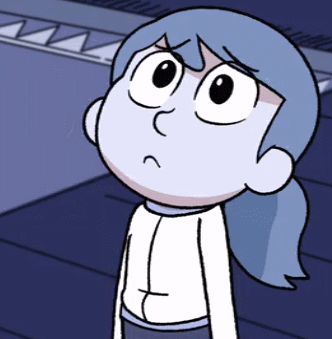

Okie dokie fellow storytellers! Now go forth! And Remember! I SPENT WAY TO LONG WRITING THIS IT"S SO LONG WTFUDSICLE ICEPOPS IS THIS LENGTH IT"S TOO LONG
Resources:
Books: Story Genius (where I got the scene card from.)
Videos on kishotenketsu: First one. Second one.
Someone rewrote twilight and it was so helpful for my writing
And... funny story... my brother got viruses on his computer and now I can't pirate anime see 'restricted videos' on youtube because of ristricted mode.
So the Hannah person that rewrote Twilight? Search for 'physic distance' Very helpful.
Also look up. 'Zoe Bee poetry.' the basics of poetry are extremely helpful.
Things you should watch (the gifs)
Rise of the Teenage mutant ninja turtles
The promised neverland
Your Name
A silent Voice
Hilda
Avatar: the last airbender
Wolfwalkers
Song of the Sea
Amphibia
The Girl from the other side
Haikyuu (how did something get me to like a sport this is insanity)
Good Omens (I can't actually watch it because homophobic parents but I've seen all the clip compilations.)
#writeblr#writers of tumblr#writers on tumblr#writerscommunity#writing resources#writing advice#writing#on writing#author tips#author things#author talks#storytelling tips#narrative#original story#stories#long post#for reference#writing community#writer stuff#creative writing#advice#writing help#writing characters#writer tips#writing tips#authors of tumblr#book writing#author#fiction#writer
56 notes
·
View notes
Text
5 Ways to Make Your Writing Sessions More Productive
1. Set specific goals: Before each writing session, establish clear objectives for what you want to accomplish. This helps you stay focused and motivated throughout the session. Whether it's completing a certain number of pages, reaching a specific word count, or finishing a particular section, having a goal in mind keeps you on track.
2. Create a conducive writing environment: Find a quiet and comfortable space where you can minimize distractions. Eliminate clutter, turn off notifications on your electronic devices, and set up a writing area that inspires creativity. Some people find instrumental music or ambient sounds helpful for concentration, so experiment to find what works best for you.
3. Develop a routine: Establish a regular writing schedule and stick to it. Consistency builds momentum and makes writing sessions feel more like a habit. Whether you prefer to write early in the morning, late at night, or during specific time blocks throughout the day, find a routine that aligns with your energy levels and other commitments.
4. Use productivity techniques: Explore different productivity techniques to enhance your focus and efficiency. One popular method is the Pomodoro Technique, which involves working for a concentrated period (e.g., 25 minutes) followed by a short break (e.g., 5 minutes). Repeat this cycle several times, and then take a longer break (e.g., 15-30 minutes). Other techniques include time blocking, task prioritization, and setting deadlines.
5. Minimize self-editing during the drafting phase: When writing your first draft, try to resist the urge to constantly edit and revise. Instead, focus on getting your ideas down on paper without judgment. This allows for a more continuous flow of thoughts and prevents self-censorship. Save the editing for later drafts, as separating the drafting and editing stages can lead to increased productivity and creativity.
#writing tips#novel writing#writersociety#writing advice#writerscommunity#writer problems#writer things#writers block#writer on tumblr#storytelling#writing#writer tumblr#bad writing#writblr#bad writers#how to be productive
1K notes
·
View notes
Text
The Emotion Thesaurus: Adoration
Hello, everyone! I will be starting a new series that will help you the writers describe emotions.
This guide will be a writer’s tool to characters expression.
This section comes from The Emotional Thesaurus by Ackerman and Puglisi.
Adoration
Definition: the act of worship; to view as divine.
Note: the subject of adoration can be a person or thing
Physical Signs:
Lips parting
A slack or soft expression
Waking quickly to erase distance
Mimicking body language
Touching one’s mouth or face
Reaching out to brush, touch or grasp
Steady eye contact, large pupils
Leaning forward
Stroking one’s own neck or arm as a surrogate
Pointing one’s torsos and feet towards the subject
A flushed appearance
Nodding while the subject speaks
Smiling
Open body posture
Releasing an appreciative sigh
Laying hand over the heart
Frequently moistening lips
Pressing palms lightly against the cheeks
Skimming fingertips along the jaw lines
Eyes that are bright
Agreement
Speaking praise and compliments
Keeping trinkets, pictures of the subject
Constantly talking about the subject to others
Rapt attention, still posture
Becoming unaware of one’s environment
A radiant glow
Visible shakiness
Reduced blinking
Closing eyes to savor moment
Speak with a soft voice
A voice that cracks with emotion
Internal Sensations
Quickening heartbeat
Breathlessness
Feeling one’s pulse in throat
Mouth dry
Throat growing thick
Rising body temperature
Tingling nerve endings
Mental Responses
A desire to move closer or watch
Fixating one’s thoughts on the subject
Acute listening and observation
Ignoring distractions
An inability to see the subjects flaws or faults
Cues of Acute or Long-Term Adoration
Obsession
Fantasizing
Believing that the feelings are mutual
A sense of destiny
Stalking
Writing and sending letter, emails, and gifts
Taking risks or breaking laws to be near or with subject
Weight loss
Poor sleep patterns
Jealousy towards those interacting with the subject
Taking on traits or mannerisms of the subject
Carrying something that represents the subject
Possessiveness
May Escalate To:
Love
Desire
Frustration
Hurt
Cues of Suppressed Adoration:
Clenching or hiding one’s hands to hide sweating or shaking
Avoiding conversations about the subject
Watching or observing from afar
Staying out of subjects proximity
Blushing
Sneaking looks at subject
Creating chance run ins
Writing secret letters, keeping diary
Lying about one’s feelings regarding the subject
Writer’s Tip:
Body cues should create a strong mental picture. If the movement is too drawn out or complicated, the emotional meaning behind the gesture may be lost.
Please like, follow and reblog if you find this helpful!
#writing#writing advice#writing tips#original writing#writers on tumblr#writersconnection#writerscommunity#short story#storytelling#writersupportingwriters
6K notes
·
View notes
Text
S4E7: How to tell stories using YouTube
If you tell stories in your YouTube videos, viewers will enjoy it so much more. This episode we talk about telling stories on YouTube. Watch and see. #Storytelling #YouTube
#TechTroublemaker #Livestreaming #Storytelling
Do your videos tell a story? Heather Roma from “Turning Scenes” will talk us through how to tell a story through your YouTube videos. Through the art of storytelling you can make your videos more engaging for your viewers and increase watch time. Turn your video ideas into storytelling, even your how-to videos can tell a story that draws the viewer…
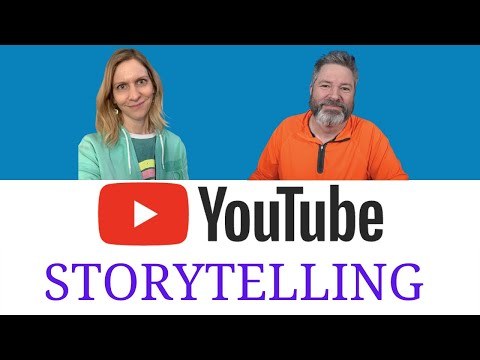
View On WordPress
#art of storytelling#how to#how to edit videos#how to get more views on youtube 2022#how to get more views on youtube videos#how to grow on youtube 2022#how to tell a story on youtube#how to tell a story with photography#how to tell a story with video#how to tell stories#Storytelling#storytelling tips#storytelling tips and tricks#the power of storytelling#video editing#video production
1 note
·
View note
Text
In 4 minutes, Kurt Vonnegut explained stories better than anyone I’ve ever heard. “The shape of the curve is what matters. Not their origins.”
He plots stories on 2 axes: X: Time, Y: Good fortune / ill fortune. He goes on to say, “Somebody gets into trouble, then gets out of it again. People love that story. They never get tired of it.”
Point 1: Stories have defined patterns.
In Joseph Campbell’s Hero of a Thousand Faces, he makes the case for the Hero’s Journey. Since then, it’s become the most famous storytelling structure in the world. Vonnegut argued stories could be divided into 8 shapes.
Each story, he said, fit one of the 8.
Point 2: Vonnegut says, “Be a sadist.”
No matter how sweet and innocent your leading characters, make awful things happen to them — so the reader may see what they're made of.” To see who your characters really are, you have to make them suffer. Only then does your audience have someone worth cheering for.
Point 3: End on a high note.
Vonnegut says, “It’s not accidental that the line ends up higher than where it began. This is encouraging to readers.” The way a story makes people feel when they finish is how they remember it. It’s called recency bias. Lift people up and they will love you.
“There are people. There are stories. The people think they shape the stories, but the reverse is often closer to the truth.” —Kurt Vonnegut
(source)
#kurt vonnegut#writing#advice#rachel zegler#snow white#pro tips#writers#storytelling#the heroes journey#heroes journey#storytime
1K notes
·
View notes